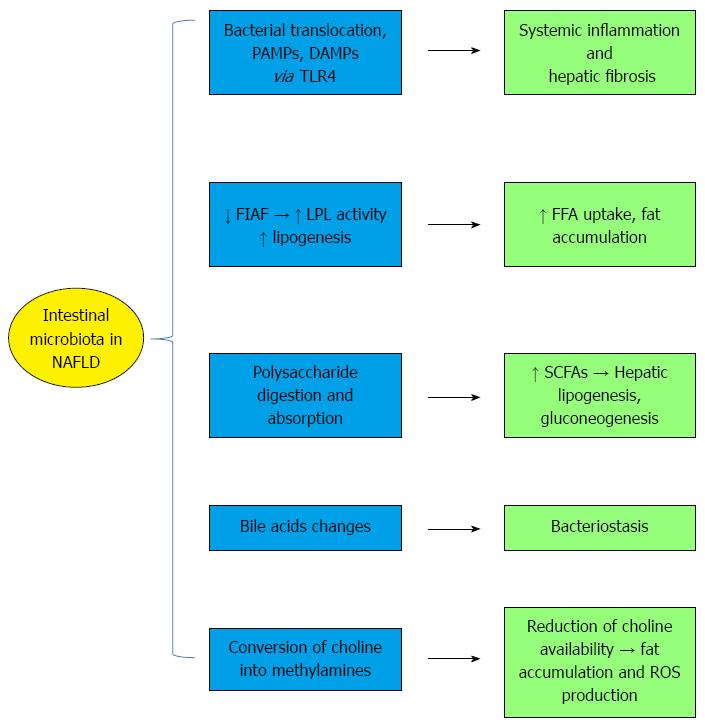Copyright
©2014 Baishideng Publishing Group Inc.
World J Gastroenterol. Nov 14, 2014; 20(42): 15518-15531
Published online Nov 14, 2014. doi: 10.3748/wjg.v20.i42.15518
Published online Nov 14, 2014. doi: 10.3748/wjg.v20.i42.15518
Figure 2 Mechanisms of the interplay between the intestinal microbiota and non-alcoholic fatty liver disease.
Intestinal dysbiosis promotes the translocation of bacterial products [e.g., damage associated molecular patterns (DAMP) and pathogen-associated molecular patterns (PAMPs)] from the intestinal lumen into the lamina propria and to the bloodstream. This event is associated with the activation of toll-like receptor 4 (TLR-4), which causes hepatic fibrogenesis and systemic inflammation. Furthermore, the intestinal microbiota reduces fasting-induced adipose factor (FIAF) expression, lipogenesis, and free fatty acids (FFA) uptake. The gut microbiota have an increased capacity to harvest energy from non-digestible indigestible complex polysaccharides into monosaccharides and short chain fatty acids (SCFAs), which are substrates for hepatic lipogenesis and gluconeogenesis. Endogenous ethanol production by some bacteria is another mechanism damaging the liver. The properties of bile acids, which exert bacteriostatic activity, are also altered. The conversion of choline into methylamines leads to insulin resistance, fat accumulation, and ROS production (modified from refs 4 and 91). LPL: Lipoprotein lipase.
- Citation: Paolella G, Mandato C, Pierri L, Poeta M, Di Stasi M, Vajro P. Gut-liver axis and probiotics: Their role in non-alcoholic fatty liver disease. World J Gastroenterol 2014; 20(42): 15518-15531
- URL: https://www.wjgnet.com/1007-9327/full/v20/i42/15518.htm
- DOI: https://dx.doi.org/10.3748/wjg.v20.i42.15518









